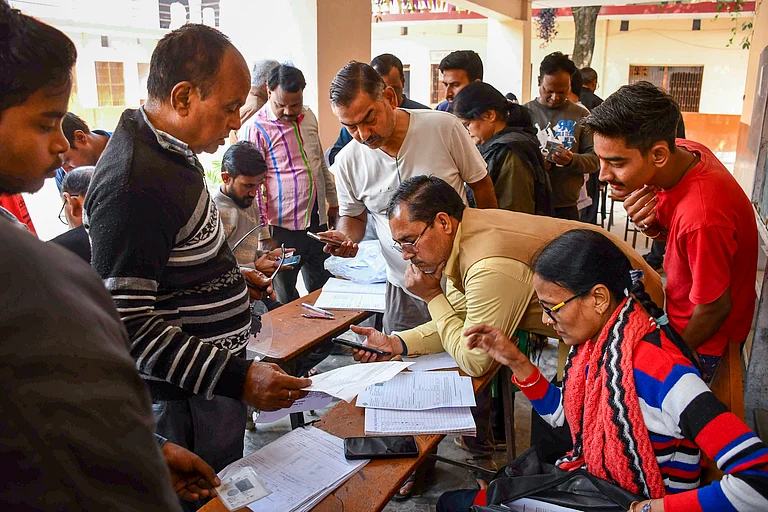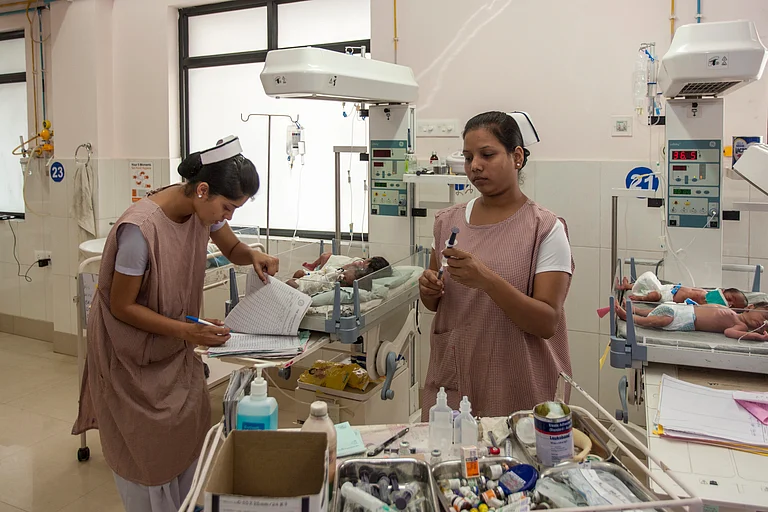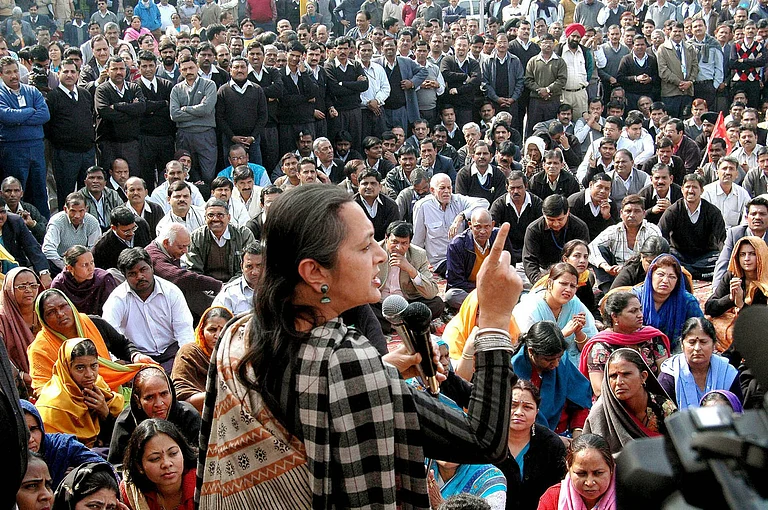The interim budget tabled by the government has once again highlighted the importance of women centric policies and allocations for fostering economic growth in the country. The Finance Minister reaffirmed Mahila (women), alongside Garib (the poor), youth and farmers, as one of the four mainstays of the economy. Despite the existence of various government programmes aimed at women's empowerment, such as the PM Awaas Yojana, Beti Bachao, Beti Padhao and Sukanya Samriddhi Yojana, there has not been sufficient emphasis on improving female labour force participation rates.
The urban and rural female labour force participation rates (FLFPR) are not in tandem. While the total FLFPR has increased by more than 10 per centage points from 23.3 percent in 2017-18 to 37 percent in 2022-23, the breakdown into rural and urban areas reveals a different scenario. The rural female LFPR surged to 41.5 percent in 2023 from 24.6 percent in 2017, whereas the urban FLFPR stood at 24.5 percent in 2023 with minimal fluctuations from 20.4 percent in 2017. However, the numbers from World Bank data paint a different picture altogether. FLFPR, according to the World Bank, was 22 percent in 2017 and has improved to 24 percent in 2022. The data from the Centre for Monitoring Indian Economy Pvt. Ltd. (CMIE) shows more dismal figures, with hardly 8.8 percent FLFPR in 2022-23. The difference in numbers is probably due to the varied calculation matrix. However, the underlying message remains the same: the current policies are inadequate.
The urban female labour force participation figures from 2005 to 2024 paint a similar picture, with percentages varying between 20-25 per cent. The inference would be that the budget allocation or the policies aimed at women should be tweaked to reflect the aspirations of urban women. A one-size-fits-all approach with “women” as beneficiaries is not conducive to solving the missing percentages.
These numbers highlight the precarious outcomes of the lopsided and myopic approach to budgetary allocations and underlying policies. Much-hailed schemes like PM Awaas Yojana and Lakhdidi SHG programmes are benefiting rural women, whereas urban women are not receiving similar focus. Therefore, understanding why urban female labour force participation is stagnant requires attention.
One of the reasons for the increase in rural FLFPR is the increase in the “self employed” category of the PLFS Survey from 55.9% in 2017-18 to 70.1% in 2022-23. This means that more women in rural areas are benefiting from schemes like SHGs, skilling initiatives, and microcredit schemes. However, a similar increase is absent among urban women, where regular salaried employment is the key ingredient in FLFPR rates. The much applauded schemes are more rural-oriented with women who are less skilled or semi skilled being the benefactors. The quality of the numbers is also questionable, as self employment in agriculture can be underemployment or disguised employment, which makes it ineffective.
The push and pull factors affecting a woman's economic decisions, like entering the job market, investing in a savings scheme or even skill acquisition, will be different for urban and rural women. One of the instances would be the family structures, where women in rural areas mostly live with their relatives around, helping them to partake in the care responsibilities falling on them. However, the case with a woman living in the city is different. Childcare or housekeeping responsibilities should be considered when deciding whether to pursue full-time employment. If a job does not offer sufficient means to cover the cost of childcare or housekeeping services, the likelihood of not being able to secure employment increases. Another factor to consider is the types of jobs available in the urban labour market. While rural jobs are predominantly in the primary and manufacturing sectors, the service sector plays a significant role in urban areas. Therefore, it is crucial to provide training and upskilling opportunities for women who have career gaps and are willing to enter the workforce.
The gender budget should be gender-responsive in a way to account for the diverse social backgrounds women come from. Budgetary allocations and policies targeting women need to be analysed from social, economic, and political perspectives to understand their impact on both urban and rural women.
To promote increased participation of women in the labour market, several steps can be taken. First, there needs to be accessible and accurate gender-disaggregated data for both rural and urban areas. Second, the accounting classification of gender budgeting should be improved by incorporating gender as a criterion for studying its impact. Third, there should be a wider adoption of gender budgeting cells in all ministries, with active participation from women. Finally, budget allocations for women should be reoriented from a one-size-fits-all approach to a more tailored one.
(Anu Maria Francis is a Senior Associate - Research and Project Management - at Centre for Public Policy Research)





















